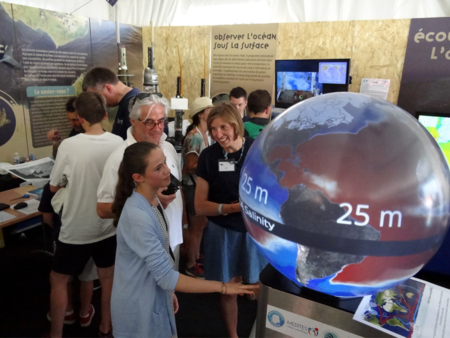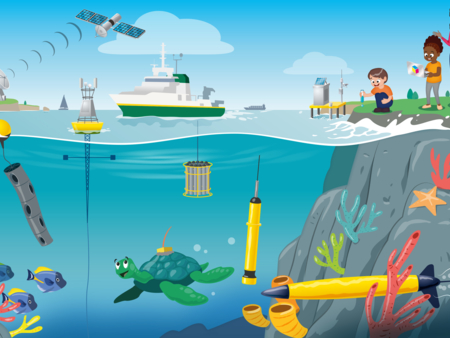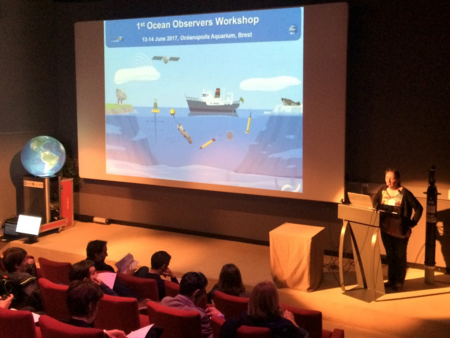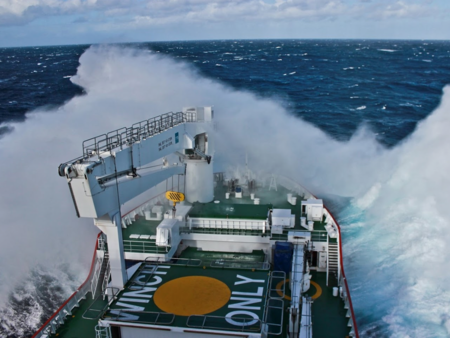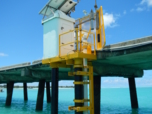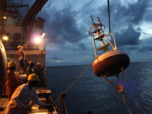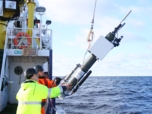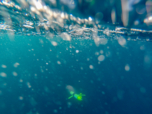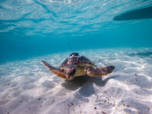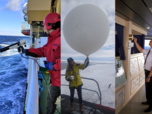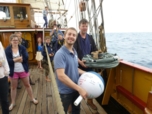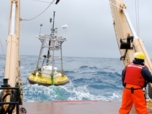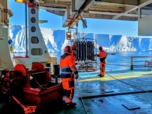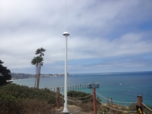Learn about observing the ocean
Why observe the ocean?
The ocean covers 71% of our planet’s surface. It plays a key role in supporting human life and our economic, cultural, social and environmental wellbeing.
As the global population is set to reach more than 9 billion people by 2050, impacts on the ocean associated with human activities will only escalate. Understanding the variability of the ocean and the related impacts on our society, through sustained ocean observations and ocean science, will be of vital importance for the benefit of all life on earth.
Ocean information is essential for weather and marine forecasting. In particular, it provides life-saving information by way of early warnings for hazards like tsunamis, storm surges and extreme waves.
Ocean observations also give valuable data for a better understanding of how all life on earth is affected by climate change. The analyses, forecasts and products based on ocean observations are the bedrock of decisions across a swath of socio-economic sectors at a global, regional and local level.
Climate change - one of the consequences of human activities - is threatening our ocean. Continued ocean warming, along with ocean acidification and other factors, is projected to lead to corals and other ecosystems extinction. These ecosystems are essential for biodiversity and food and livelihood for millions of people. Low oxygen zones are created because of increased nutrient loads and ocean warming. Nutrient pollution is leading to harmful algal blooms that devastate marine biodiversity and pose a significant risk to human health.
We’re also aware of how much we don’t know about the ocean. To improve our knowledge and to better meet expanding societal needs, the ocean observing community is introducing new technologies and improved capabilities. These advancements will provide more observational information in real-time and long duration high-quality data needed for detection of ocean change, as well as help to address the lack of data in poorly sampled regions.
One of the United Nations Ocean Decade Challenges is to ensure a sustainable ocean observing system that delivers timely data and information accessible to all users on the state of the ocean across all ocean basins in recognition of the fundamental importance of observations to the success of the Decade. The global ocean observing networks will play an important role in achieving this goal over the next decade.
How do we observe the ocean?
Currently, about 10,000 in situ observing instruments monitor the global ocean. These instruments include networks of autonomous profiling floats, drifting and fixed buoys, piloted underwater robots, ships, sea level gauges, and even marine mammals. They have various applications, such as forecasts and early warnings, climate studies and marine ecosystems health monitoring.
In situ observing instruments measure many environmental parameters from the sea surface to the sea floor. They provide essential calibration and validation data for satellite observations of the sea surface. These in situ observational platforms also measure surface marine meteorological variables and sample the water column.
Discover all the ocean observing networks in the pages below!

